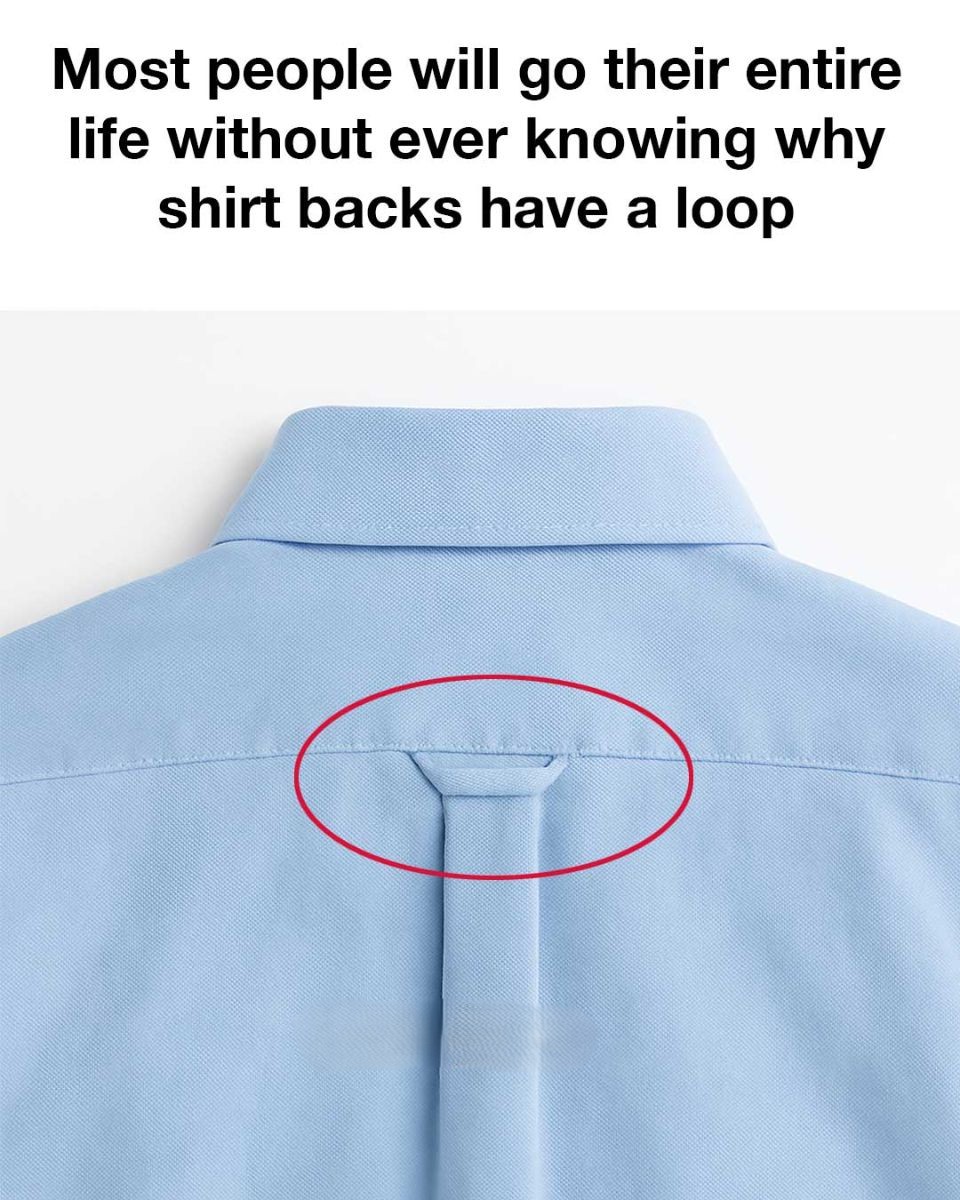In the world of fashion, there are many details that go unnoticed by the average person. One such detail is the small loop found on the back of many shirts, particularly dress shirts and casual button-downs. Most people will go their entire life without ever knowing the purpose of this seemingly insignificant feature. This article aims to unravel the mystery of the shirt back loop, exploring its origins, evolution, and the various reasons it continues to exist in modern apparel.
Historical Origins of the Shirt Back Loop
The shirt back loop, often referred to as a ‘locker loop,’ has its origins in the mid-20th century. It is believed to have first appeared on shirts made by the GANT company in the 1960s. These loops were initially designed for Ivy League college students who needed a convenient way to hang their shirts in gym lockers, hence the name ‘locker loop.’ This innovation quickly caught on and became a standard feature in men’s shirts, symbolizing a blend of practicality and style.
The Evolution of Shirt Design and Functionality
Over the decades, shirt design has evolved significantly, with changes in fabric, fit, and features. The shirt back loop is a prime example of how a functional design element can become a staple in fashion. While its original purpose was purely practical, the loop has since taken on new meanings and uses, reflecting changes in lifestyle and fashion trends. As shirts have become more than just a basic garment, every detail, including the back loop, contributes to the overall aesthetic and functionality of the piece.
Top Reasons Why Shirt Back Loops Exist
The shirt back loop serves multiple purposes, each contributing to its continued presence in modern apparel. While some reasons are rooted in practicality, others are more symbolic or stylistic. Here, we explore the top reasons why these loops are still found on shirts today.
Reason 1: The Locker Loop for Convenient Hanging
The primary reason for the existence of the shirt back loop is its original function as a locker loop. This feature allows shirts to be hung on hooks without the need for a hanger, making it ideal for gym lockers or small closets. This convenience is particularly appreciated in environments where space is limited, and it remains a practical solution for those who prefer to keep their shirts wrinkle-free.
Reason 2: A Fashion Statement in Men’s Apparel
Beyond its practical use, the shirt back loop has become a subtle fashion statement. It adds a touch of detail to the back of a shirt, often contrasting with the fabric or color of the garment. In some circles, the presence of a back loop is associated with a preppy or collegiate style, harkening back to its Ivy League origins. As fashion trends have evolved, the loop has been embraced as a symbol of classic, timeless style.
Reason 3: A Practical Feature for Drying Shirts
In addition to hanging shirts in lockers, the back loop is also useful for drying shirts. After washing, shirts can be hung by the loop to air dry, reducing the risk of stretching or misshaping that can occur when using hangers. This method of drying is gentle on fabrics and helps maintain the shirt’s original fit and appearance.
Reason 4: A Remnant of Vintage Shirt Styles
The shirt back loop is also a nod to vintage shirt styles, preserving a piece of fashion history. As retro and vintage styles have made a comeback in recent years, the loop serves as a reminder of the classic designs of the past. It connects modern wearers to a bygone era, adding a touch of nostalgia to contemporary fashion.
Reason 5: A Symbol of Quality and Craftsmanship
Next Page

